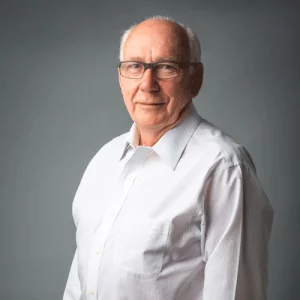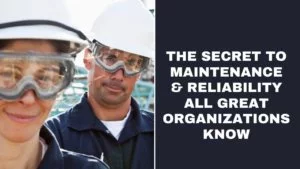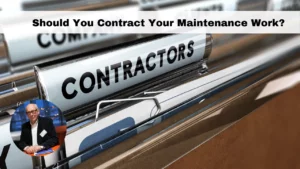I’ll summarize these two reasons for you and then give you more details.
- – Lack of long-term consistent leadership
- – Focus on the tools that support the holistic system instead of integrating those tools with the holistic system
I’m going to tackle the first point in this article.
Lack of long-term consistent leadership can be illustrated in the chart below:
Here is a scenario I’ve seen at many mills & plants over the years:
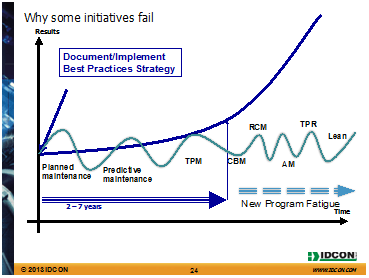
Many years ago an organization started what they called Planned Maintenance. This initiative lasted a couple of years.Then they started Predictive maintenance implementation, which also lasted a couple of years.
This was followed by Total Productive Maintenance (TPM) implementation, then Condition Based Maintenance (CBM). At some point the rate of “new initiatives” accelerated and the organization implemented Reliability Centered Maintenance (RCM) (which is a tool and not a complete system) was started; then Asset Management (AM); Total Productive Reliability (TPR) became a new initiative and today the organization is focusing on Lean Maintenance.
What could go wrong with implementing so many improvement initiatives? At some point in time the people in the organization will suffer from “New program Fatigue”, and it will be very difficult for the next improvement initiative to get enthusiastic followers beyond the “happy Island” of people who initiate the next improvement tasks.
Per one of our surveys on www.idcon.com it shows that over 60 % of plants have had more than three plant managers, production managers and maintenance managers in the last 10 years.
Often now key managers introduce a new initiative without truly evaluating present and previous improvements and this is often damaging to progress.
What can you actually do to sustain your R & M improvement initiatives?
The best organizations develop, document and consistently over long period of time implemented Best Practices. By following the developed and documented strategy (regardless of leadership change) they reach sustainable, and continuously improved, quality production throughput and lower costs in two to seven years.
It is up to the organizations leaders to have the long-view of improvement initiatives and not the newest fad that may bring short-term results but cannot be sustained.
Point #2 “Focus on the tools that support the holistic system instead of integrating those tools with the holistic system” will be discussed in the next article.
We want your feedback on our articles!
We have surveys at www.idcon.com that you can take or you can certainly email us at info@idcon.com it you have questions about Reliability and Maintenance Best Practices and how to implement them at your organization.
